Advance the road that leads to the ancient city of Baena and along the way we are accompanied by immense fields full of rows of olive trees . It is that famous green sea, the one that dyes the lands of the Andalusian interior, the one that welcomes a land famous for its liquid gold. Not in vain, Baena is the cradle of the best olive oil of the world.
We lower the window and the fresh, pure air of the southern countryside takes over our lungs and our desire to investigate. To delve into the past a unique, magical enclave, with more than 20 centuries of history . Suddenly, the silhouette of the white farmhouse, with its imposing castle at the top, warns us that we have arrived: Baena looks splendid for us . We expected nothing less of her.
IT'S TIME TO WALK
The best way to explore this municipality located in the geographical heart of Andalusia is - in case there was any doubt - on foot. So we pull the car aside and get ready to walk its winding alleys in search of that essence that makes it unique: the Al Medina neighborhood is our place.
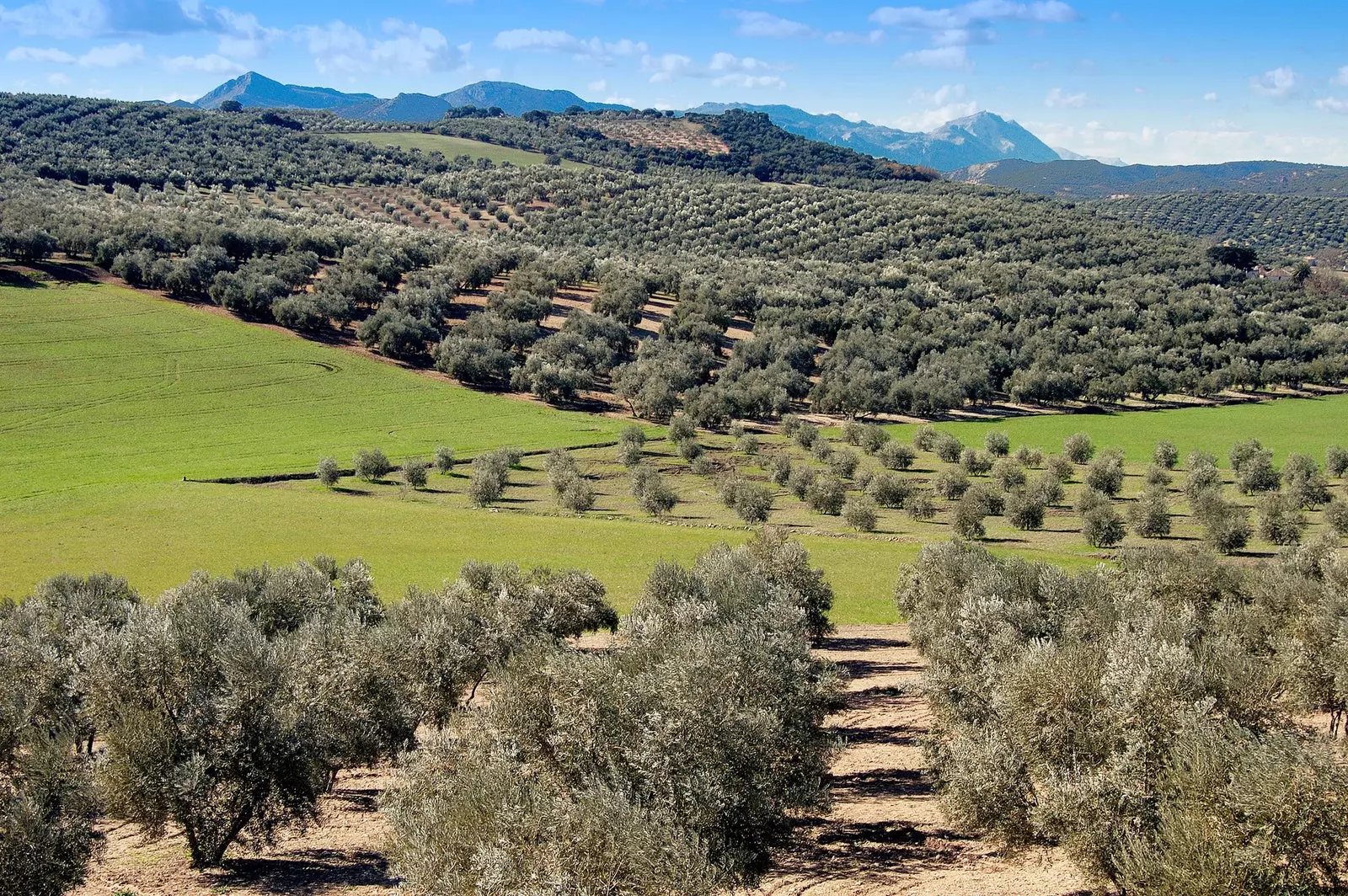
A row of olive trees awaits us near Baena.
We walk between narrow whitewashed streets full of nooks and crannies and flower pots while we contemplate how the Arab past is still present despite the centuries . The remains of the old Muslim wall accompany the path to the great historical icon of the town.
At the top of Baena, its ancient castle continues to dazzle after several years of restoration in which some parts have been reconstructed. The reason? At the beginning of the 20th century, this Baen symbol was largely dismantled, and many of its stones for other constructions.
From the top of one of its towers, with views of the Baena farmhouse scattered at the foot, and the Minguillar hill In the distance —where the ancient city known as Iponuba was located—, we noted a couple of data.
The first of them, which after the reconquest of the city settled in this castle one of the most important families in Andalusia at the time, the Fernández de Córdoba , which gradually transformed its defensive aesthetics into a palace. And the second: legend has it —with little historical basis, yes— that between these walls Boabdil himself was held captive after losing Granada . Let the imagination fly.
We descend again through the streets of the municipality without stopping to impregnate ourselves with stories from the past. We passed by Amador de los Ríos, where manor houses survive symbol of a not so distant bourgeoisie.
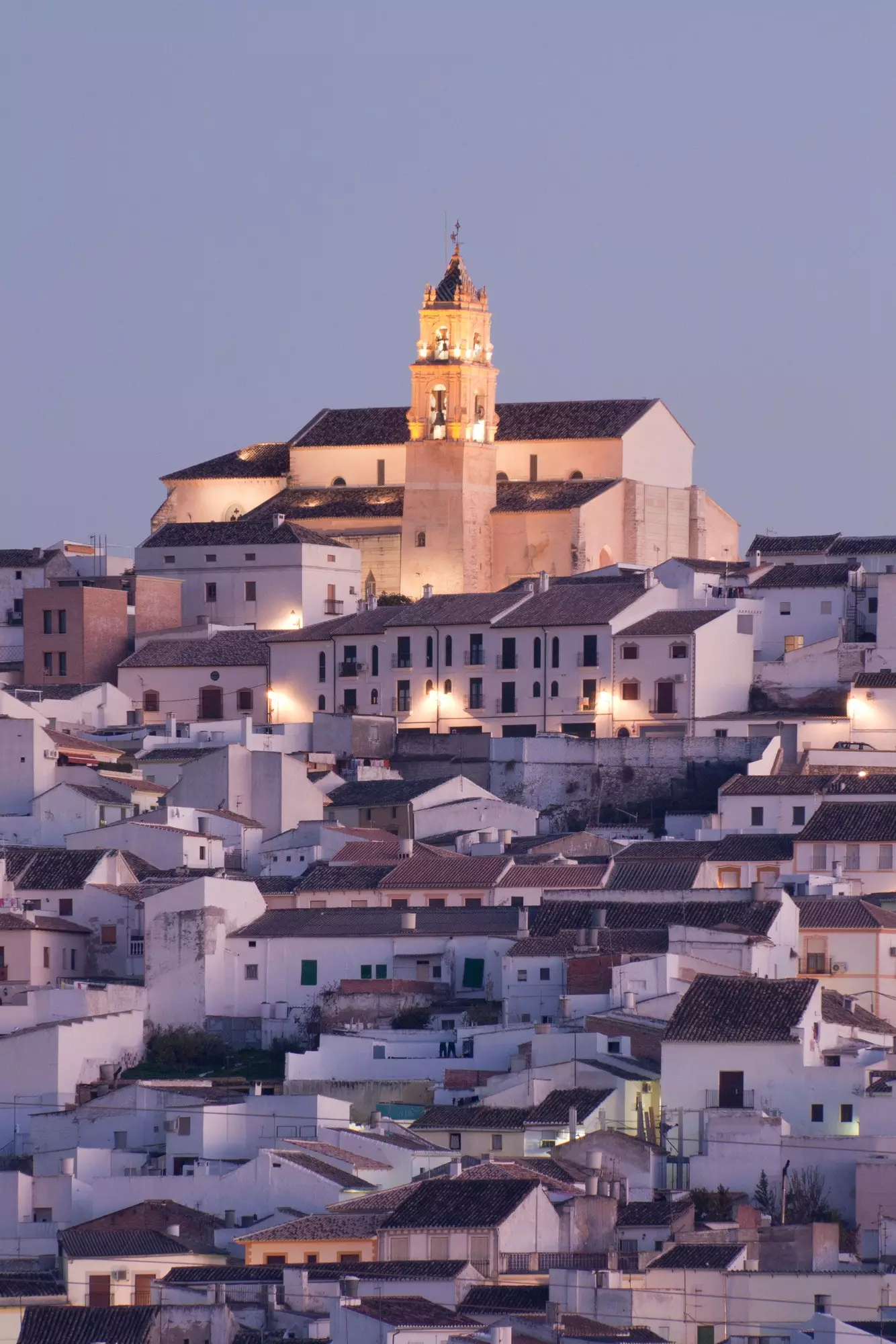
The church of Santa María la Mayor crowns the Barrio Alto de Baena.
In Baena, religion occupies an important place, so it is worth stopping at one of its most popular churches: that of Santa María la Mayor crowns the Barrio Alto since the beginning of the 13th century and houses in its interior some elements of singular beauty, such as a beautiful plateresque style grille.
A TRAVEL IN THE TIME
But for understand well the past that has shaped the Baena that it is today , and learn about the legacy left behind by the different civilizations that passed through here —and we mean Iberians, Romans, Visigoths, Muslims and Christians, that's nothing— the best thing is raid your Archeological Museum.
A temple to art located in the historic Casa de la Tercia , used centuries ago both as a church barn, as a tenement house, an inn, a library or even a prison during the post-war period, and which houses exceptional pieces in its entrails found in the main archaeological sites from the surroundings of Baena.
Among the most prominent? The stone lions that rule the ground floor of the museum and that they were always placed by the Iberians on their graves. One of them captures our attention: it is popularly known as the Giocondo of Baena , nickname given to his — guess? — enigmatic smile.
We keep looking at the bust of Emperor Claudius , in the Iberian ex-votos extracted from the neighbor Torreparedones site , or in the surprising Roman numismatic collection with more than two thousand pieces.
On the second floor of the museum, a new world opens up before us: are the rooms dedicated to the culture and traditions most deeply rooted in Baena , like everything that is related to its Holy Week, considered of National Tourist Interest.
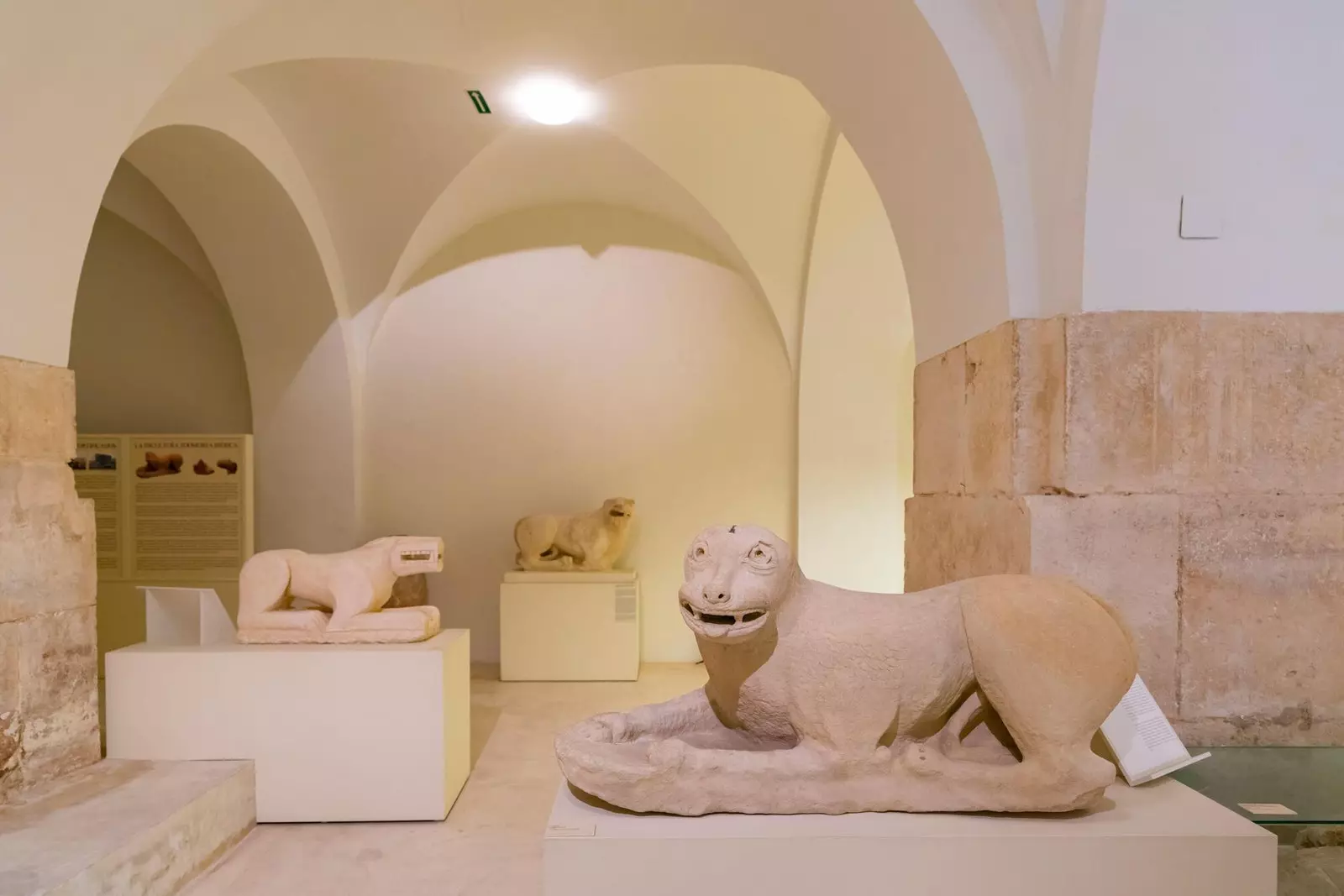
The stone lions are one of the most famous pieces in the Archaeological Museum of Baena.
What makes it such a characteristic and special party is, above all, the incomparable sound of their drums and the colorful costumes worn by the famous Jews, main characters of their big week. Divided into White-tailed and Black-tailed , the helmets they wear, true works of art made by Baen artisans , are sayings of admiration.
STOP TIME AND FONDA
And it turns out that so much art and so much tradition whet our appetite. But we're in luck: it is already known that in Cordova you eat well . But very good.
So we walked just a few more steps and ran into the wide Plaza de la Constitución , with the town hall dominating the side and the House of the Mountain , a colorful 18th century building that retains all its stately imprint, capturing our attention.
But what we are looking for is precisely under its arcades: the House of Mount Restaurant, led by José Luis , concentrates in its menu the essence of Baen gastronomy, characterized above all by olive oil and garden products.
Here we wrap our heads around the blanket and bet on the local classics, which in this kitchen are made with the utmost care: some aubergines with salmorejo, a flamenquín of oxtail and a mojete of potatoes , the most traditional local recipe, delight those of us who seek to enjoy roots cuisine. Of the real flavors. And take advantage!
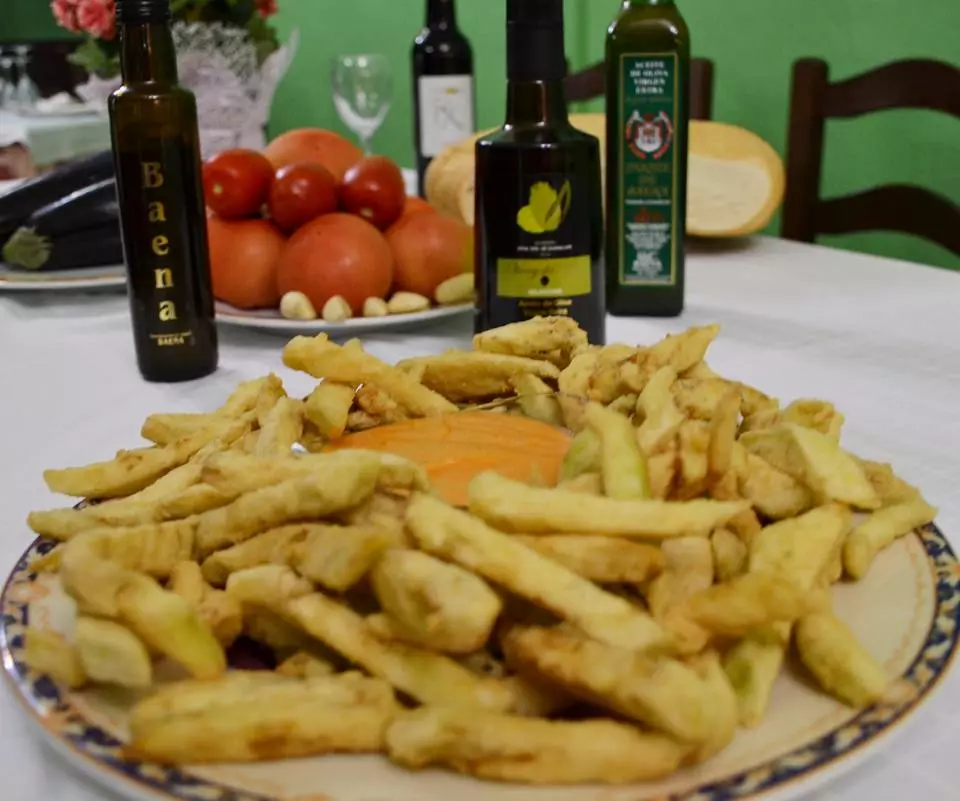
Do not leave the Casa del Monte restaurant without trying the aubergines with salmorejo.
BACK TO THE ORIGINS
We have spent half an article talking about the past of Baena, and to finish off the search for those origins, there is a place on the list of must-sees that we still have to check off: Torreparedones, one of the leading Roman archaeological sites in Spain , is just one of the —eye— 290 deposits located in its municipal term.
will have to walk for your forum discovered , one of the best known examples of Roman architecture from the imperial era, and walk along one of its perfectly preserved causeways. Also enjoy watching its old hot springs or knowing the history of the multiple sculptures that were found there. Between them, a thoracata, military representation of the emperor, or a bronze inscription located in the square with the name of his patron.
The Iberian footprint, for its part, was reflected above all in the sanctuary found in the southern area: the venerated divinity, Dea Caelestis , received as a sign of gratitude from her devout stone anthropomorphic figures. Exact: the more than 300 pieces that are exhibited in the museum.
NOW YES: LET'S DIP BREAD
And it was about time! Because olive oil is not just synonymous with health and well-being , nor that in this corner of the world it constitutes a whole way of life. Furthermore, it turns out that the DO. Baena it is one of the oldest in Spain : with more than 70 thousand hectares of olive groves, and 19 registered olive varieties, its Regulatory Council was formed in 1981. And its oil is delicious!
To verify it —and in the process learn everything about its production and quality— we went to Núñez de Prado, the oldest active mill in the Mediterranean . It is located in a traditional Andalusian farmhouse in the heart of Baen, and its extensive patio full of flowers and bougainvillea is just the prelude to this sanctuary to the olive culture that conquers those who visit it.
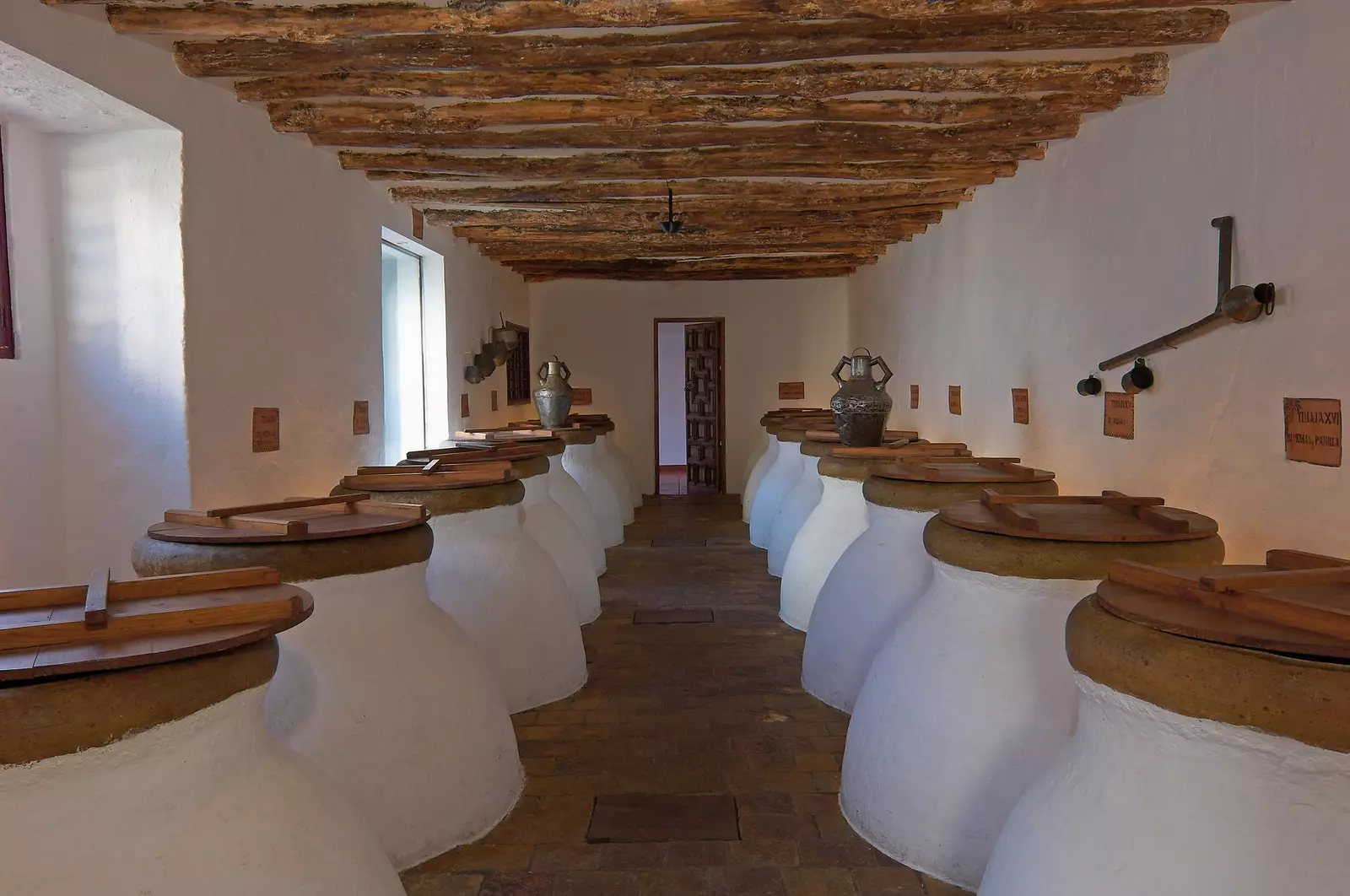
An open door to the Núñez de Prado oil mill, the oldest in operation in the Mediterranean.
Among its facilities there are authentic gems such as a cellar with jars from the 18th century or a classic oil mill from 1943 , but it is when the time comes for the guided tasting when time stands still: nothing beats patiently assimilating and identifying the notes of each of its varieties, calmly appreciating its flavors.
To put the finishing touch to the experience —and after getting us a few bottles of Nuñez de Prado to take home, of course—, we finished this trip to Baena as it could only end: among olive trees.
And so, intoxicated by that unique picture that so identifies the Andalusian landscape, it will be time to walk, inspire deeply and understand that this is the origin of much of the history of our land: the one that gives life to the revered liquid gold that emerged from its olives . Which one, if not?
